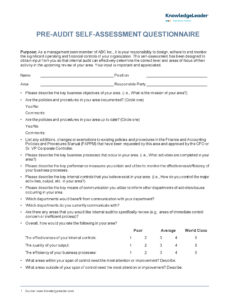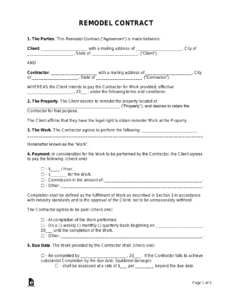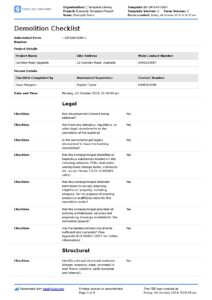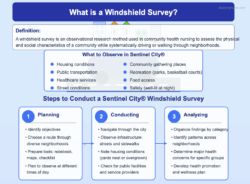Understanding the potential presence of asbestos in buildings is a crucial step for property owners, duty holders, and anyone involved in property management or renovation. A Type 1 asbestos survey, often referred to as a “presumptive” or “visual” survey, serves as an initial assessment designed to identify easily accessible asbestos-containing materials (ACMs) and gauge the overall risk within a property. It’s a fundamental part of a proactive approach to health and safety, providing a snapshot of known or presumed asbestos locations without intrusive sampling.
This preliminary survey helps establish an initial asbestos register, guiding immediate safety measures and informing decisions about further, more detailed investigations if necessary. It’s an essential tool for compliance with regulations that require duty holders to manage asbestos risks in non-domestic properties, protecting occupants and workers from exposure to harmful fibers.
Understanding the Purpose of a Type 1 Asbestos Survey
A Type 1 asbestos survey focuses on visually identifying presumed asbestos-containing materials that are readily accessible and visible within a property. This non-intrusive approach means that the surveyor won’t be breaking into walls, ceilings, or disturbing materials to collect samples. Instead, they rely on their expertise, knowledge of common asbestos products, and visual indicators to identify suspect materials. The primary goal is to assess the presence and condition of these materials to provide an initial risk assessment, which is vital for ongoing management of the building.
This survey type is distinctly different from more intrusive surveys like a Type 2 management survey or a Type 3 refurbishment/demolition survey. While a Type 1 survey provides a good starting point for understanding potential risks, it does not guarantee the absence of hidden asbestos. Its scope is limited to what can be seen and accessed without damage. Therefore, it’s primarily used for general risk assessments and the creation of an initial asbestos register, informing what further, more detailed surveys might be needed before any significant work takes place.
Building owners and duty holders are typically the ones who need this type of survey to comply with health and safety regulations, particularly the Control of Asbestos Regulations. It helps them fulfill their duty to manage asbestos in their premises, ensuring the safety of anyone who might enter or work within the building. Failing to conduct an appropriate survey can lead to serious health risks and legal penalties. The survey report then becomes a living document, informing ongoing maintenance and management plans.
During a Type 1 survey, the surveyor will meticulously check various areas for visible asbestos. This includes looking at pipe insulation, floor tiles, ceiling panels, roofing materials, and other common places where asbestos was used in construction. They will note down the location, condition, and type of suspected material, along with a preliminary assessment of the risk it poses. This initial data is crucial for developing an effective asbestos management strategy.
Key Elements of a Type 1 Asbestos Survey
- Visual inspection of accessible areas for suspect materials.
- Identification of presumed asbestos-containing materials (ACMs).
- Assessment of the condition of identified ACMs, noting any damage.
- Basic risk assessment based on material type, condition, and location.
- Recommendations for further action, which might include more detailed surveys or encapsulation.
Crafting an Effective Type 1 Asbestos Survey Template
Having a well-structured and comprehensive type 1 asbestos survey template is incredibly beneficial for professionals conducting these assessments. A robust template ensures consistency across all surveys, helping to standardize the data collection process and minimize the chances of overlooking critical information. It provides a clear framework for documenting findings, which is essential for accurate risk assessments and for creating a legally compliant asbestos register. This standardization also makes it easier for different parties to understand and interpret the survey results.
An effective type 1 asbestos survey template should guide the surveyor through every necessary step, from initial client details to the final recommendations. It typically starts with administrative sections, such as the client’s information, property address, and surveyor details. Following this, it moves into the specifics of the survey, outlining the scope, any limitations encountered during the inspection, and a clear methodology. This transparency is crucial for the integrity of the report and for managing client expectations regarding what the survey does and does not cover.
The core of the template involves sections dedicated to observations and suspect materials. For each identified or presumed ACM, the template should prompt for details like its precise location, a description of the material, its condition (e.g., good, fair, poor, damaged), and an initial assessment of the risk. Providing a consistent framework for these critical observations ensures that all relevant data points are captured systematically. This structure is what transforms raw data into actionable insights for the duty holder.
A well-designed template also incorporates sections for photographic evidence, which adds immense value to the report, along with a disclaimer outlining the limitations of a Type 1 survey. Crucially, it should include space for clear, concise recommendations for managing identified asbestos, which might range from monitoring to suggesting a more intrusive Type 2 survey. Regular review and customization of your type 1 asbestos survey template are important to ensure it remains current with best practices and regulatory changes, continuously improving its effectiveness in supporting asbestos management efforts.
- Surveyor and Client Details for clear record-keeping.
- Property Information and Access Notes to guide the assessment.
- Survey Scope and Limitations to define the boundaries of the inspection.
- Observations and Suspect Materials, detailing location, condition, and type.
- Risk Assessment Matrix for consistent risk evaluation.
- Recommendations and Management Plan Notes for actionable advice.
- Disclaimer and Limitations to clarify the survey’s scope and purpose.
- Signature and Date for official authorization.
Taking a proactive stance with asbestos management begins with a thorough understanding of your property. Implementing a robust Type 1 asbestos survey is a foundational step in identifying potential hazards and ensuring a safer environment for everyone. By systematically identifying presumed asbestos-containing materials, you can create an initial inventory that informs responsible decision-making and complies with essential safety regulations.
The consistent use of a detailed survey template streamlines this crucial process, ensuring that no stone is left unturned during the visual assessment. This structured approach not only enhances the accuracy and reliability of the survey findings but also provides a clear pathway for ongoing asbestos management, ultimately contributing to better health outcomes and peace of mind for property owners and occupants alike.



